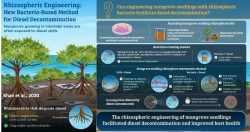Microbial SynCom
Microorganisms are also important to our environment and humans. Any change in their community composition can influence the function. These functions can be synthesized and replicated in a man-made environment. Microbe offers a diverse array of benefits to human beings to improve the deteriorating environment. Utilizing such microbes, specifically those living in extreme environments, for bioremediation and biostimulants is key to the lab’s goal.

Approaches:
This research work involves several methodologies such as:
- Isolating, culturing, and characterization of bioactive microbes from different environments
- Molecular identification by sequencing the amplicon 16S/ITS gene and bioinformatic analysis
- Whole-genome sequencing the bioactive microbial strain with NovaSeq 6000 Illumina and PacBio
- Bioinformatic analysis with the help of UH cluster and available computational resources in the lab
- Identification of gene-clusters and biosynthetic pathways in potential microbes
- Gene cloning, transformation, and genome editing technologies to develop competent microbes
- Developing microbial biobank for Texas across different environments
Current Project:
- Development of synthetic communities for hypersaline environment to improve plant growth